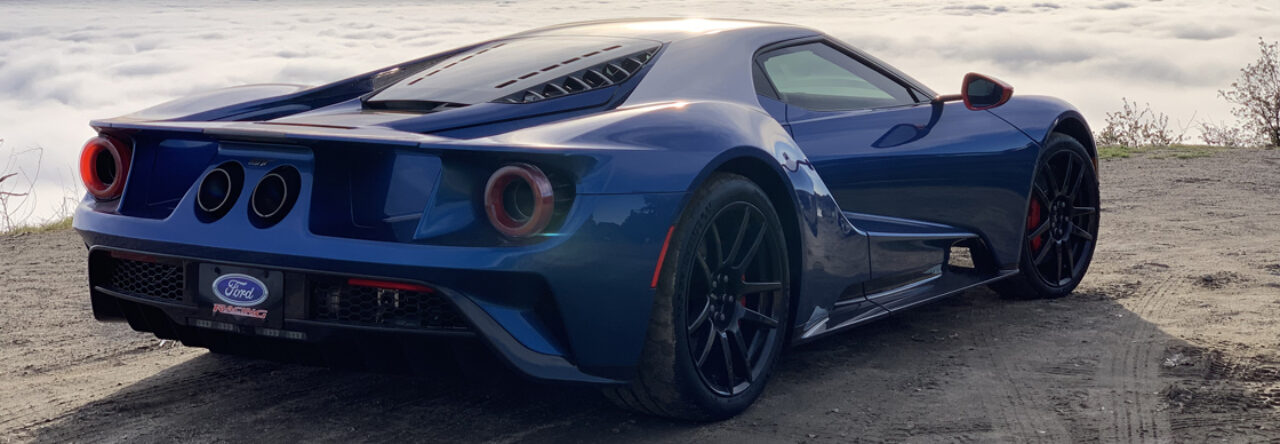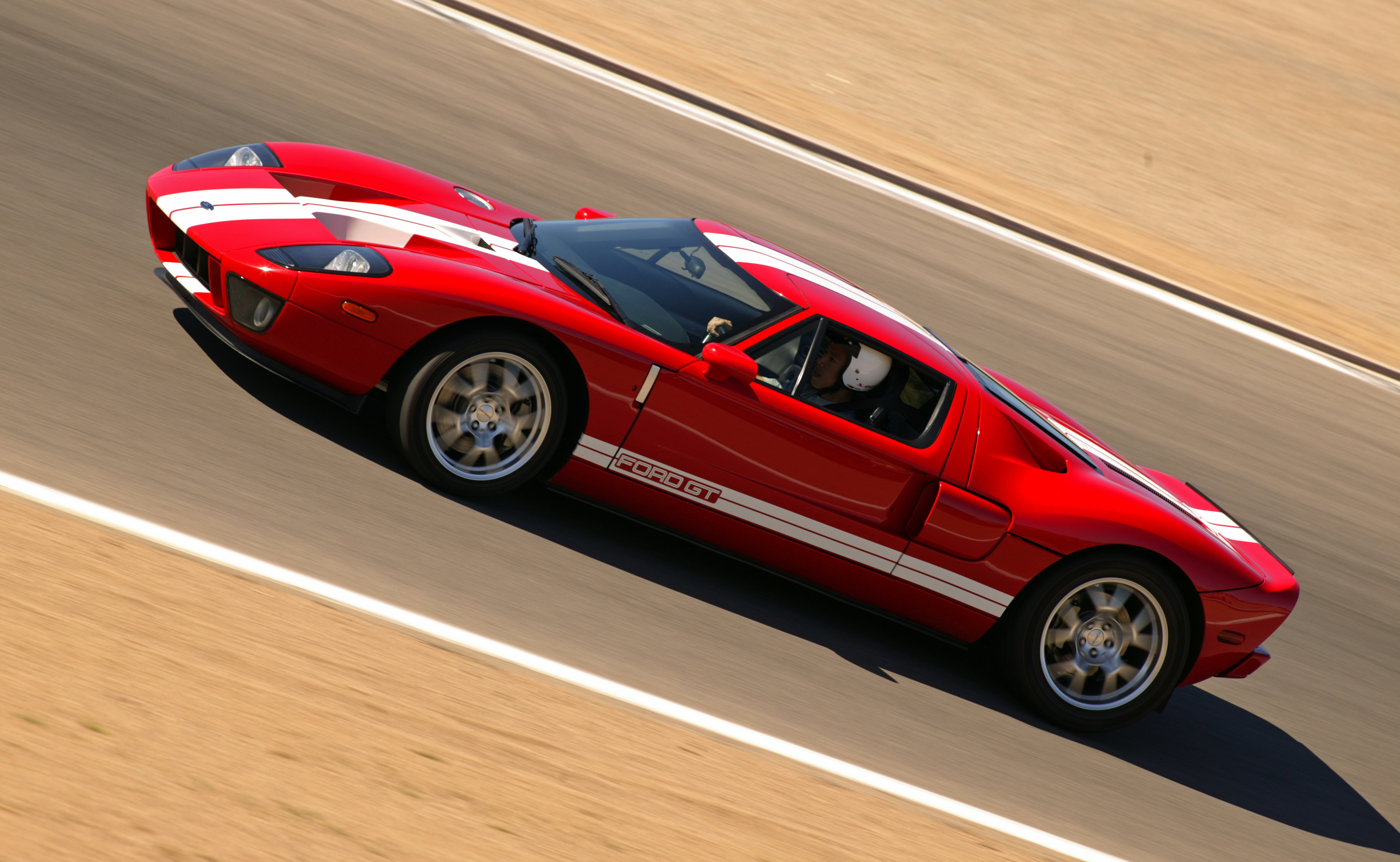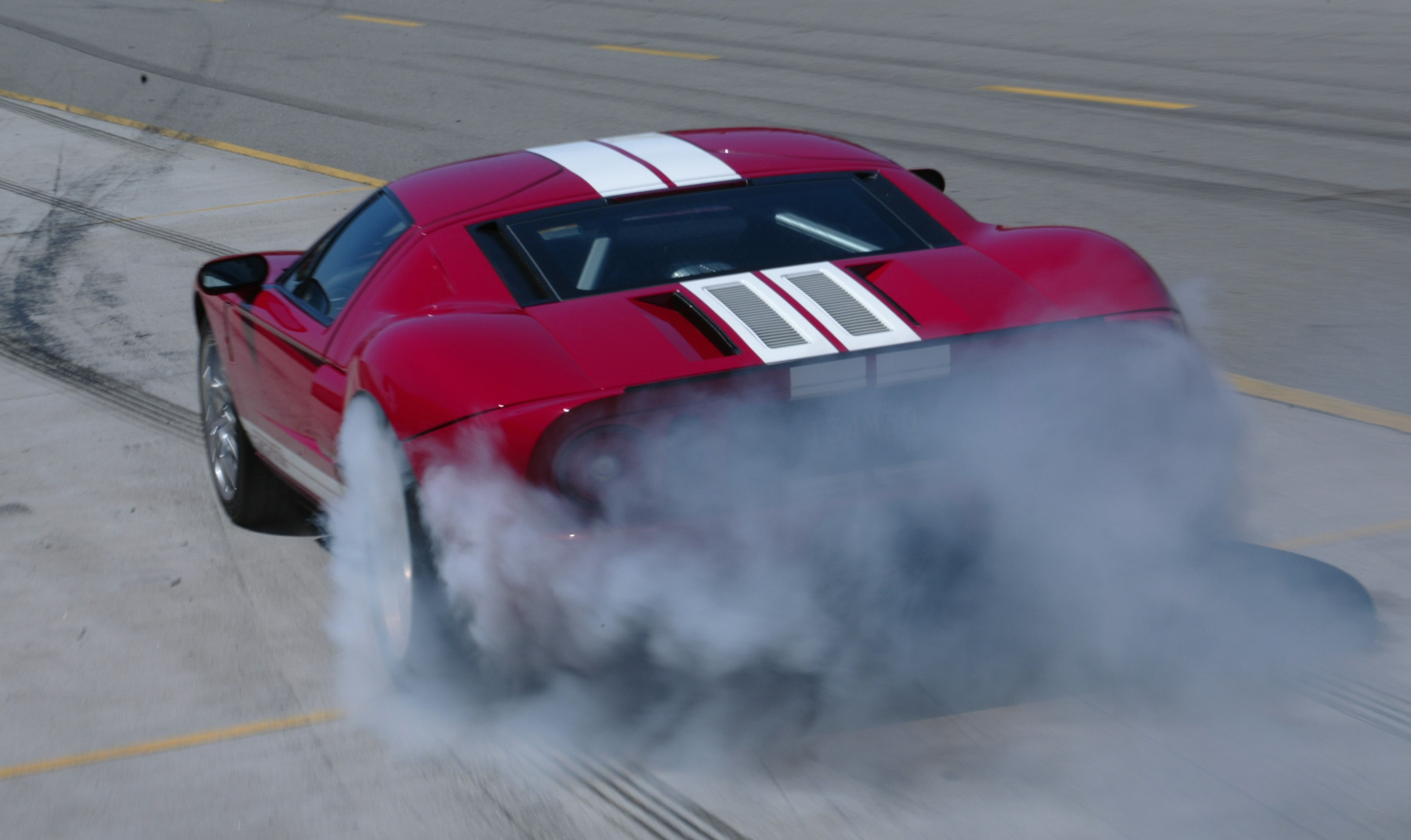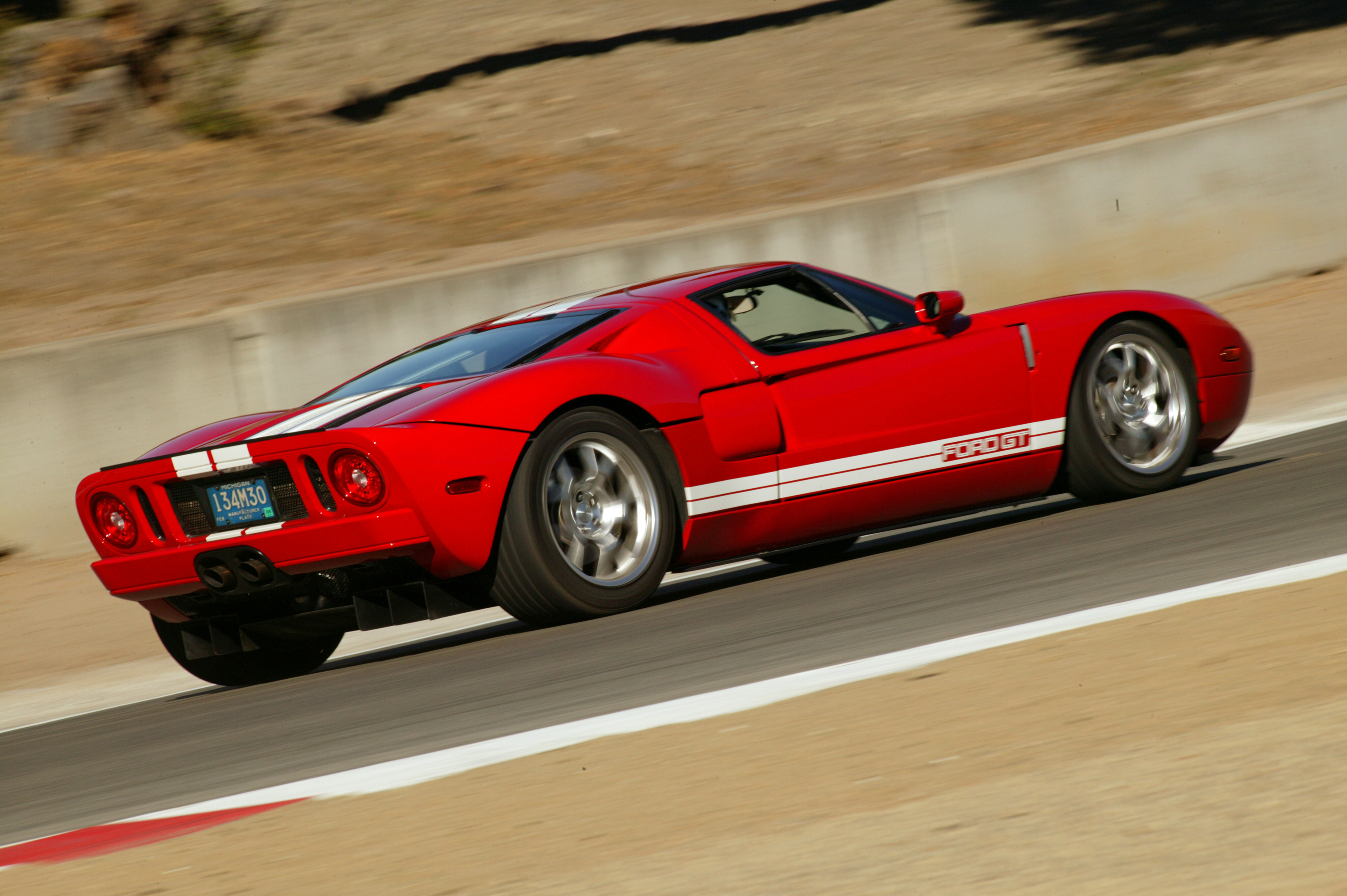Months before my Ford GT arrived in August of 2005 I had a story idea. I thought it would be fun to set up a Sony Playstation console with the (then) latest Gran Turismo 4 driving simulator and see what kind of lap times could be pulled at a virtual Mazda Raceway Laguna Seca. Then, after driving the virtual lap times I’d take the same cars from the game and drive them around the real Laguna Seca. And because the “hero car” for Gran Turismo 4 was the 2005 Ford GT that car would also be the hero car of the story. (Quick side note: Top Gear did the same story, which might lead you to believe I stole the idea from them. The problem with that thinking is that I did the story 4 months before Top Gear, which, of course, means they stole the idea from me! Wankers…)
I shared this idea with Ford’s PR team in the summer of 2005 and they liked it, so we arranged the use of Laguna Seca on August 29th and 30th of 2005. This was shortly after I ordered my GT, in April of 2005, and months before it arrived on August 23, 2005. But never let it be said I don’t love serendipity. My car arrived less than a week before our scheduled test at Laguna Seca, which meant I could drive my Midnight Blue GT up to Monterey and hang with Ford’s Mark IV Red GT press car (along with several other test cars being driven on a virtual and real Laguna Seca). Following is the Ford GT vs GT4 story that ran in September of 2005.
Ford GT vs GT4: Reality vs. Virtual Reality
I’m approaching the blind crest of Laguna Seca’s front straight in the 550-horsepower Ford GT. The speedo has swung past 100 mph, but the car continues to accelerate through its meaty torque band like a low-altitude cruise missile. Yet despite the blind hill I already know exactly what resides on the other side, because I’ve just completed four laps at this same circuit on Sony’s PlayStation2 driving simulator, Gran Turismo 4.
In fact, the level of accuracy and detail conveyed by Gran Turismo 4 is downright eerie. By setting up a 43-inch LCD monitor, Sparco Racing Cockpit Pro seat and GT4 force feedback steering wheel, and driving the circuit in Laguna Seca’s infield just before sliding into a real Ford GT, I truly feel like I’m already familiar with the track’s layout before ever leaving pit row. The placement of the “Mazda Raceway Laguna Seca” pedestrian bridge as I rush under it on the front straight; the location and design of the tower just off Turn 1 — they’re all spot-on representations of the real deal (OK, the grass surrounding the real track, in August, wasn’t nearly as green and lush as it’s portrayed on Gran Turismo 4).
And if I just pulled a 1-minute, 38-second lap time on Grand Turismo 4, driving a Ford GT around Laguna Seca, obviously my lap time in the real world, driving the same car on the same track, should be the same, right?
Why Reality Bites
Wrong. I can’t manage better than 1 minute, 52 seconds in the harsh reality of…well, reality. Where did those 14 seconds go? Most of them disappeared on the front straight I just described. Sure, the track’s layout and visual cues are all the same as in Gran Turisimo 4. But careening over a blind crest at 100-plus mph is somehow different when seated in Ford’s $150,000 exotic press car than it is when seated on a Sparco race seat, staring at a widescreen LCD. Very different.
Watching the practice session replay on Gran Tursimo 4 makes it painfully obvious where — and why — I lost time. In virtual reality land I keep the throttle mashed all the way over that crest and halfway down the hill before braking for Turn 2. My terminal velocity in the game is around 140 mph. In reality, I’m braking just before I crest the hill, topping out at a meager 105 mph. On a track like Laguna Seca, where your terminal velocity on the front straight is crucial, I’m throwing away any chance of matching my virtual time by refusing to stay on the gas over that crest.
Which brings up the single biggest difference between reality and virtual reality — consequences. A mistake on Gran Turismo 4 costs me nothing more than a bad lap time. A mistake with a real exotic car on a real racetrack is…a bit more costly.
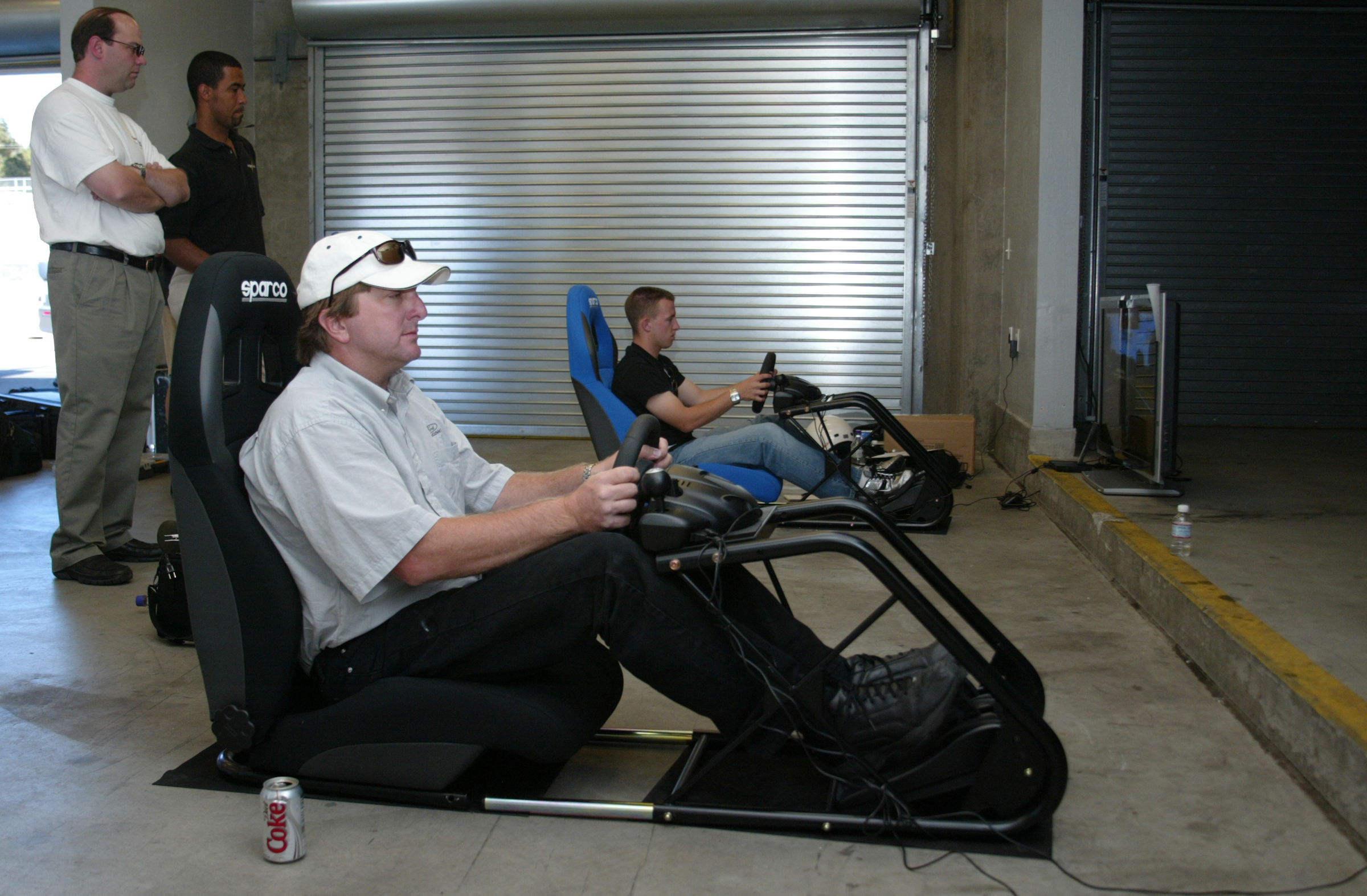
Grand Turismo 4 testing before the real-world driving
Why Reality Doesn’t Bite
The other major difference between virtual racing and the real thing is feedback from the car — or an almost total lack thereof. Yes, the force feedback steering wheel does its best to let you know when you’re veering off the track, or sliding the rear end, but none of this comes close to the kind of information you get while driving a real vehicle. And in a car like the Ford GT, that’s vital information. Because of the GT’s midengine layout and powerful brake system you can use trail braking to rotate the car and set up your entry angle on any given turn. You can also sense how much traction you’ve got left in the front and rear tires when getting on the throttle, which greatly aids cornering speed.
So while the consequences of real life work against your lap times in reality, the complete immersion in vehicle feedback you get while driving an actual Ford GT makes it easier to push the envelope on the real Laguna Seca racetrack than on the virtual reality version. It’s these two factors that battled it out as I drove not only a Ford GT, but also a Dodge Neon SRT-4, Ford Mustang GT, a Mazda RX-8 and a Mitsubishi Lancer Evo through the corkscrew and around the 11 turns that make up Mazda Raceway Laguna Seca.
And just to keep this story interesting we dragged along Justin Kaehler, gaming editor extraordinaire from IGN.com, and Champ Car driver AJ Allmendinger, to see which background provided the best training for virtual-versus-reality gaming. Who would pull the best times? Would it be the hard-core gamer, the professional racer, or the deluded automotive journalist who thinks he’s both?
Read the next section of this story to find out.
